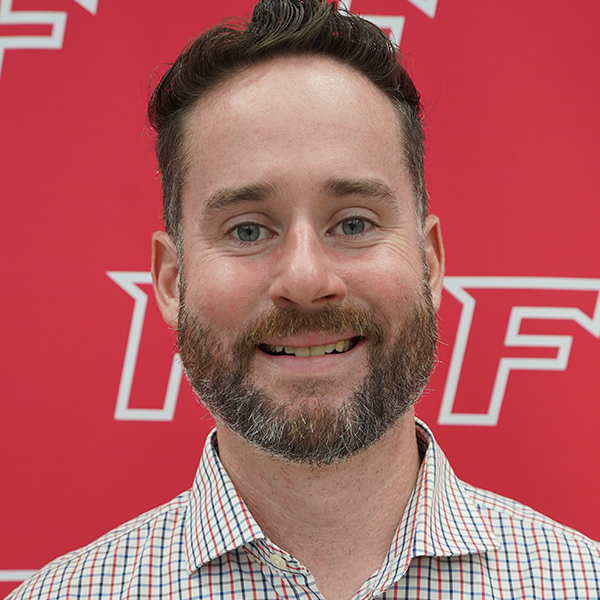Biography
Brian Kabel enters his third year at Fairfield University as the Assistant Director of Facilities & Events for the Department of Recreation. Prior to that, he served as the Assistant Director of Recreation for Campus Life at Quinnipiac University, the Director of Recreational Sports at Western New England University and the Program Coordinator of Intramurals & Facilities at the University of Washington Bothell. In his current role, Kabel oversees the staffing, schedule and equipment in the RecPlex. He focuses on customer service, student development and community collaboration.
Kabel has been active in NIRSA since 2012. He has presented at state and regional conferences, volunteered at regional tournaments, and served on state, regional and national conference planning committees. He served as the Secretary for the Massachusetts Association for Recreational Sports from 2017-19 and currently serves as the State Director for Connecticut/Rhode Island. These experiences have been invaluable to his growth and development.
Brian lives in the Black Rock section of Bridgeport, CT with his wife Sarah and their dog Iggy. He currently serves as the President of the Black Rock Little League and a member of the Black Rock Community Council. Brian and Sarah both enjoy running, most recently combining to raise over $16,000 for the Boston Medical Center and completing the 128th Boston Marathon.
What is your NIRSA “Why”? (What does NIRSA mean to you?)
NIRSA is why I am where I am today (both personally and professionally). It has opened doors for me, challenged me to do more and given me a career. I can remember sitting at my first Annual Conference, listening to Tony Clements emcee the Honor Award Banquet and knowing then that this was what I wanted to do for the rest of my life. The energy, passion and inspiration that I felt then, I still carry with me today.
The most important thing is the connections I have made through NIRSA. The individuals I have worked for along the way who still serve as mentors. The colleagues I have volunteered at tournaments with and still see a few times a year. The students that have worked for me and I still hear from. The examples and stories are endless and are still growing.
The opportunity to have a leadership role will deepen my impact to create connections between and among my colleagues. Getting involved in campus recreation completely changed my college experience. It gave me a sense of purpose. To now be on the other end of that, and hopefully have a similar impact on students, is the reason I go to work every day.
What are the current trends in collegiate recreation and higher education that you see impacting our work and the Association? How would you collaborate with the members in your region and the Member Network team to solve these issues?
The biggest trend and topic that I am seeing come up is Artificial Intelligence. It is slowly but surely beginning to enter into multiple aspects of everyday life – and we are no exception. Emails are being written differently, marketing is starting to look different and mundane job tasks are now being completed with the click of the button.</br />The other topic I frequently hear is how to engage with this current generation of students who have largely grown up influenced by social media and cell phone access. Attention spans seem shorter than ever, emails are rarely read and commitment is a forgotten concept. How can we adjust the way we operate to meet some of these challenges yet continue to provide the same level of recreational experience?</br />Working within the region and Member Network is an excellent place to face these (and any other) challenges that we are seeing on our campuses. During my time as state director, I have strongly benefited from the collaboration among those groups. Colleagues in Region 1 are always willing to pick up the phone and help. To continue to facilitate connections is one way to help combat some of the new challenges we are facing with a new generation of individuals on college campuses.
How has your experience in your state, region, and/or NIRSA prepared you to serve on the Member Network? What unique skills or talents would you bring to the Member Network?
I have been fortunate to gain a wide-range of experience that will set me up for success to serve on the Member Network. I have served on a state leadership team, currently serve as a state director and have volunteered on regional and national committees.
This has given me the opportunity to observe, listen and participate in many different initiatives. I have worked closely and learned from many colleagues across the country. This has helped me build a strong network that I can rely on for guidance in this endeavor.
Outside of NIRSA, community matters deeply to me. As President of the Little League in my neighborhood, and a leadership role in my neighborhood community counsel, I feel strongly about building strong communities. I would bring this strength to the Member Network.



